Makiko Ara is the senior instructor at Renbu Dojo, and has been involved in kendo for more than 30 years. She holds the rank of Renshi Nanadan, is the Vice President of the Canadian Kendo Federation, and has represented Canada in four World Championships. Makiko offers some unique insights into the experience of being a woman in the sport and the importance of fostering a sense of community in the kendo world.
Edited for copy and based on an interview for Tokushikai Inside Look Podcast with host, Patrick Suen. A special thank you to Patrick Suen for the opportunity to share my kendo experience with the world.
Q: How did you become involved in kendo? Was it something you’ve always been interested in?
I was exposed to kendo at a very early age. My father was an instructor and used to bring my sisters and I along to his kendo club all the time. We all hated it. There weren’t any other girls at the club — there weren’t really any kids our age, so we had a hard time picturing ourselves in the sport. We participated on and off, but never really committed to the sport.
When I was about 12, my dad took me aside and gave me an ultimatum: if I didn’t start doing kendo now, he wouldn’t ever let me do it. I was really into sports at the time, and in my stubborn brain, I thought, “Well, that’s no good.” So I started taking it more seriously — and that was the beginning of my journey.
Q: Do you see yourself as a role model for girls in the kendo world?
There are definitely a few kendo leaders in Canada, but there aren’t as many role models for women in some of the higher positions that we talk about, like being a coach, instructor, head of the club or even higher rank. A lot of women I hear say “I’m yondan” or “I’m sandan, that’s good enough.”
They don’t have the ambition to move up higher because they don’t see those role models. They don’t see other women doing it so they don’t think it’s possible, and I think that’s where people feel like perhaps they’re not good enough or that that path doesn’t exist for them. And that’s something I never felt as a young person but I do feel it as I get older. I’ve started to realize that the world’s not necessarily open to everything and everyone.
I’d love to be that person that helps people to see those opportunities for themselves. Because you can’t really push people but you can give them those opportunities and allow them to be successful in what they want to do.
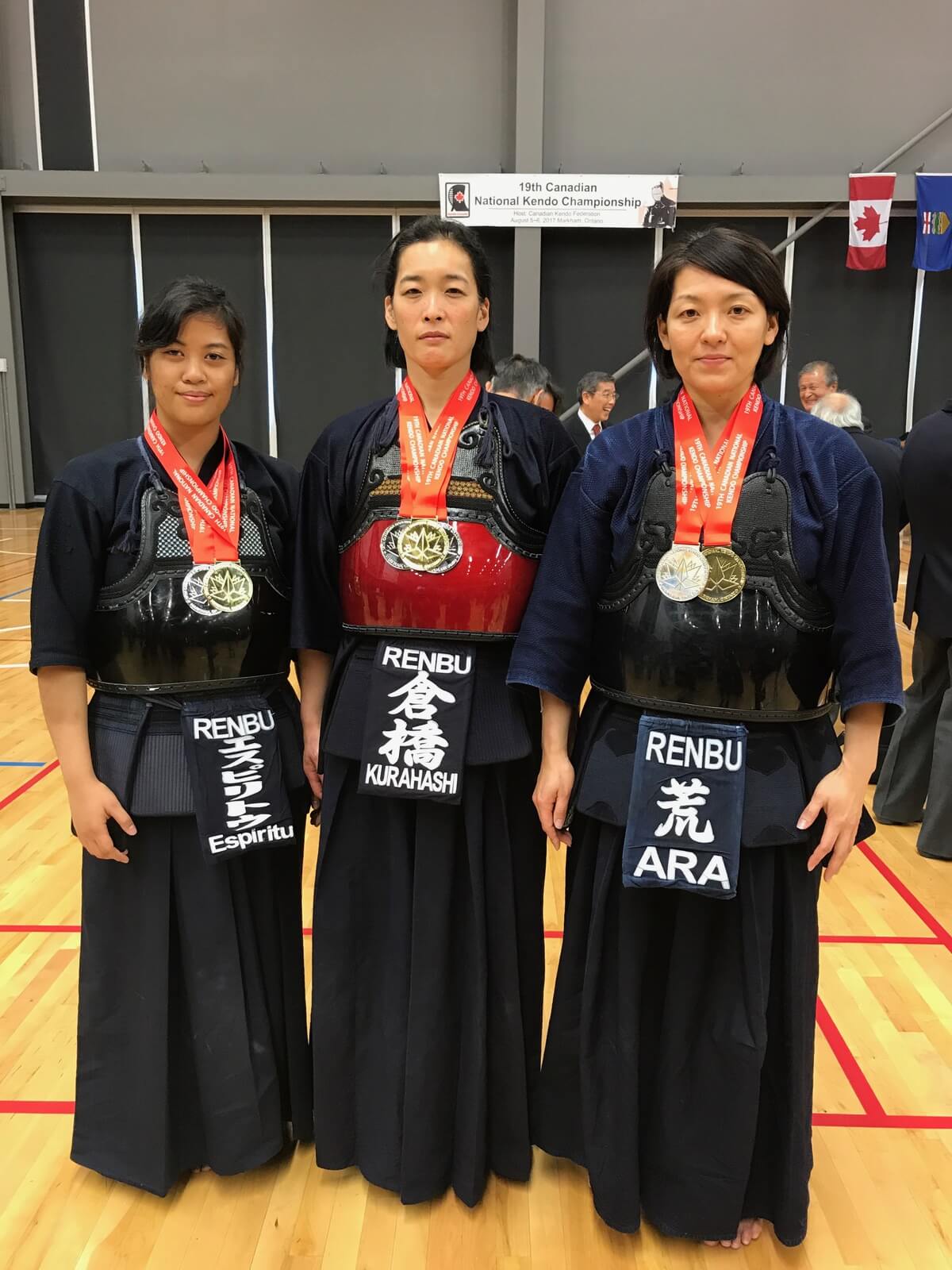
Makiko in the 19th Canadian National Kendo Championship.
Q: What did your journey to the World Championships look like?
Starting kendo at the age of 12 put me behind. That’s the age when most young kenshi begin competing. So I had to be very focused. I practiced a lot — my dad would take me to different dojos through the week, as well as our own, so I was practicing five or six times a week. It was kind of a blur.
“There wasn’t an official women’s division until 1997. I knew people on Team Canada before I went, but until that point, women only participated in goodwill matches with junior players on the sidelines of the main men’s tournament.”
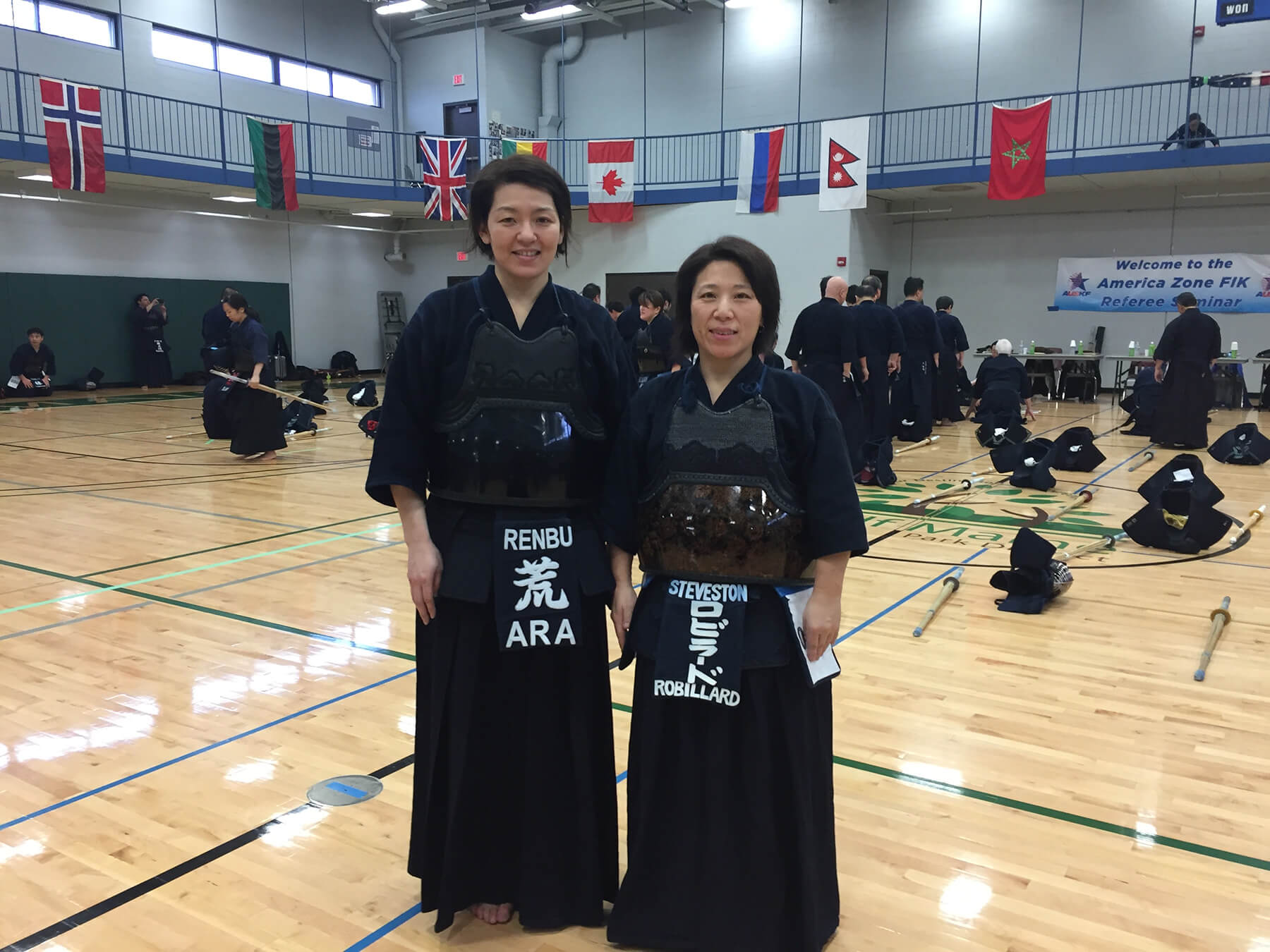
Makiko with Wendy (Nakano) Robillard.
I was really fortunate though, to have a role model locally, Wendy (Nakano) Robillard. She is the most decorated Canadian kendo player of all time and I was lucky to know her since I was very young, and also to have her as a rival in later years. She is an amazing competitor and was a teammate and coach for me throughout my entire career on Team Canada. She continues to take a leadership role in kendo and I very much value our relationship.
Earning a spot on Team Canada was a big turning point. Kendo is an individual sport, but being selected for the team made me realize that it was very much a team endeavor. The first World Championships I went to was in 1997 in Kyoto, Japan. It was an eye-opening experience. Seeing how so many people around the world were involved in kendo and how competitive it was, really surprised me. Back then there were no YouTube videos to watch to see what it would be like.
Q: What value has kendo brought to your life?
I think one of the huge values kendo offers for me is the opportunity to build long, ongoing relationships with a wide variety of people. There are people who join the club as adults and are new to kendo, and I get to introduce them to something new and bring them into the community. There are others who have been in the kendo world longer than me, but now I get to motivate them to keep going. There are all kinds of people: parents, children, people with high ambitions and people who just want to be in the community. And I get to have a relationship with them all.
Up until then, I was very much the student. I was learning, accepting and just taking up to that point — which is the pathway of martial arts where you want to absorb as much as you can and you don’t question much. Being put into the leadership position suddenly was a big wakeup call. I felt it was too much at first. My father passed away ten years ago. When he got sick, I had to take over the club. That was a big challenge for me.
As someone in their twenties, how do I talk to a parent whose kid is not coming to practice? How could I possibly relate?
There were other instructors at the club who were higher ranked than me. Who was I to say who’s going to run which practices or what events we’re going to have? I felt like more of an administrator. But I also felt like I had to assert myself and make sure that I fulfilled my role.
Kendo has given me the opportunity to be in a number of roles and build long term relationships with hundreds of people. Nothing really phases me anymore and I feel these experiences have given me an arena where I have come to understand how to engage with people and learn how I work best. It has given me some very important life experiences.
“Kendo has given me the opportunity to be in a number of roles and build long term relationships with hundreds of people.”
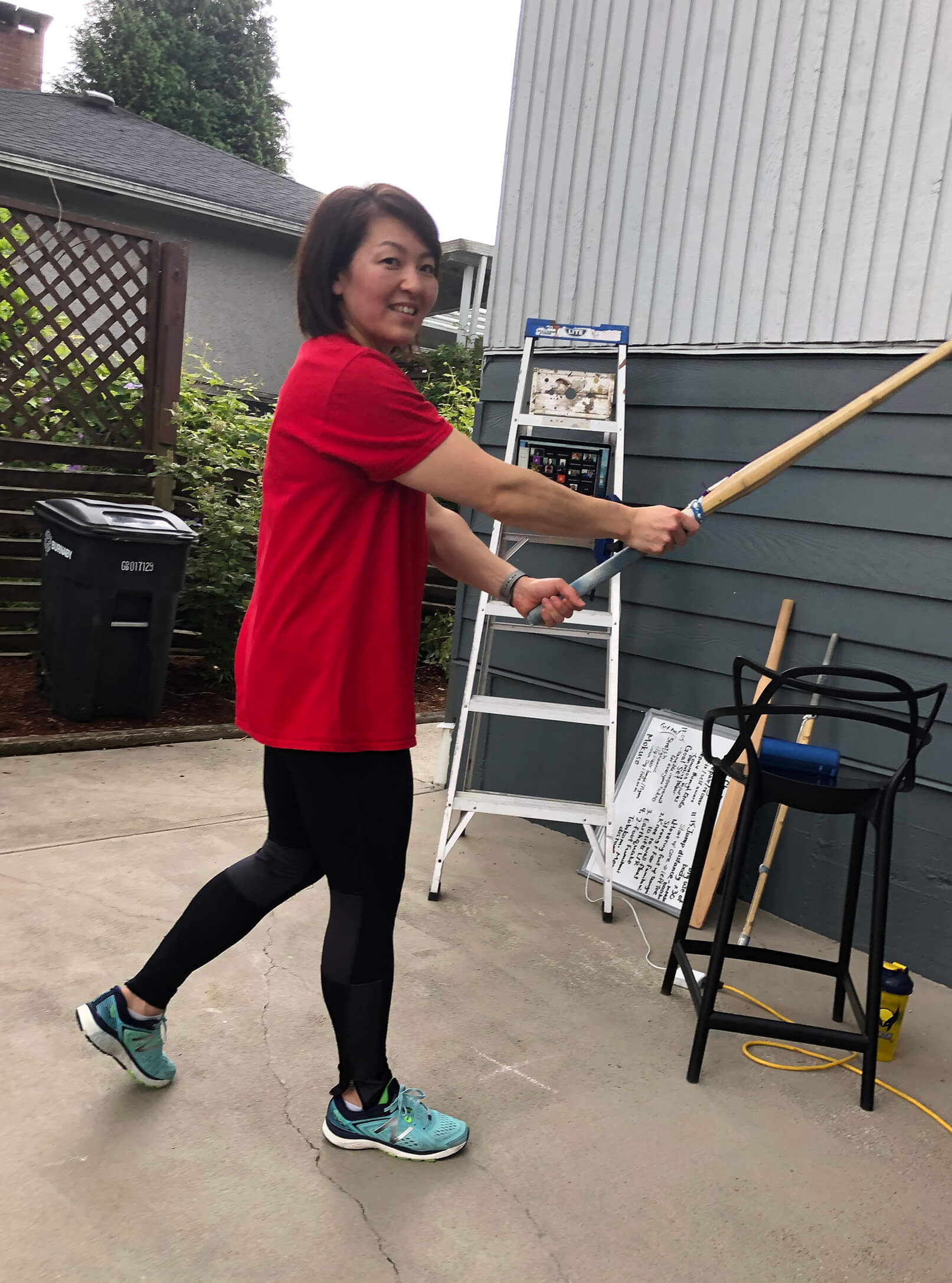
Makiko practicing kendo at home.
Q: What lessons did you learn as an instructor?
I’m not the head instructor at our current club, my husband is. But we have a breadth of instructors that is very deep. We have several instructors that have been on Team Canada, we have other younger instructors that are coming up. I think it’s so valuable for instructors or leaders of a dojo to be a team.
All the instructors are volunteers and it’s really important to realize that we all don’t have to be there. So it’s important that kendo still provides value to instructors. I feel the same way for myself too.
Many people at the instructor level don’t have big goals anymore like making Team Canada. But most of our instructors are still grading for rank and that’s something that’s very important that we stress: everyone, even up to the oldest instructor, should still be trying to achieve some sort of a goal so that we grow. Because a big part of kendo is to grow and continue learning.
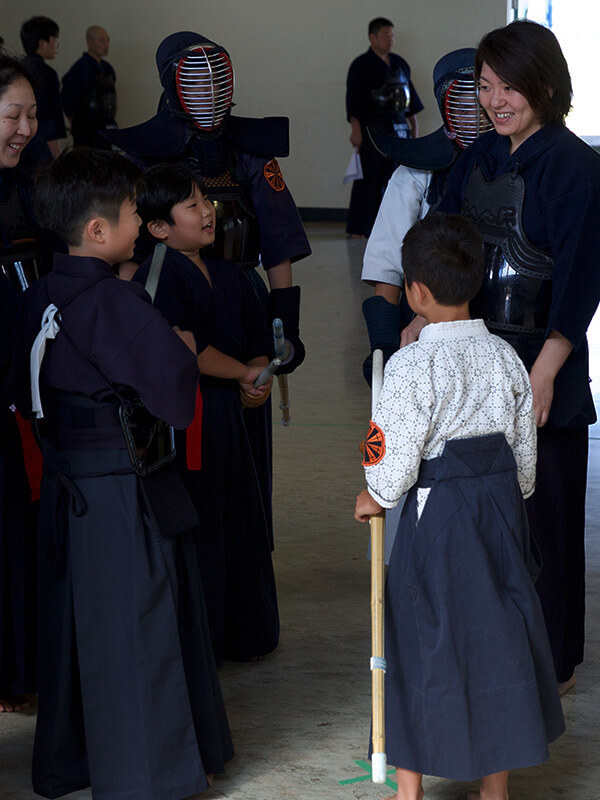
Makiko with junior members.
Q: How important is rank when assuming a leadership role in a kendo club?
Achieving a high rank is important in kendo — as in many sports, but it’s not the only thing that matters. In our club we have a student who started kendo when he retired. So he was probably 60. He’s in his 70s now, but within our club he’s an MVP.
Ten years ago when most of us were having kids and were super busy with work and family, he was there to take on many of the tasks that needed to be done around the club. He’s only just passed sandan a couple of years ago. So even when he was doing a lot of the things for our club, he was just shodan or nidan, but he’s just a great person to have in our club and we’re really lucky to have him. He definitely provides that anchor for us, and he represents us well if we ask him to go out into the kendo community.
So to answer the question… Rank is important. It shows your skill, experience and also your commitment to kendo. But in terms of how we should engage with each other in the community, I think we have to take rank into consideration, but the intent of the individual and value of the person is even more important.
Q: Is there a strong sense of community in your club?
“Definitely. We’ve worked to make it a really inclusive place for people of all ages — we even created a special program for juniors to encourage more children and youth to come out and participate.”
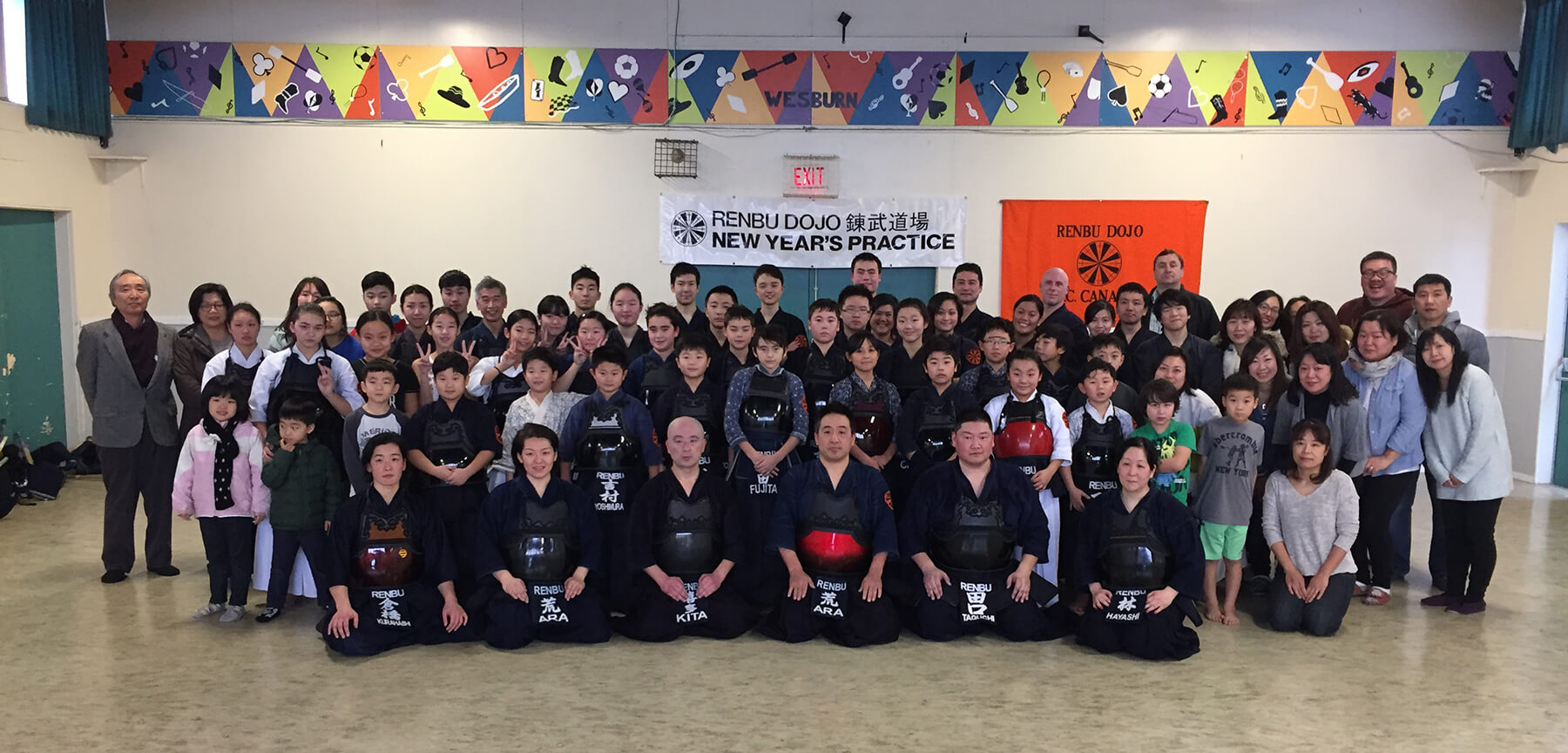
New Year’s Practice at Renbu Dojo.
If I think back to when I was at Vancouver Kendo Club, the club was made of immigrant families who found a strong sense of community within the club members. Our club now is much more diverse but it is a very tight community with many families counting on each other for support and also friendship. It does take work to create a culture of trust, and once that is there, you attract the right kinds of people and the community begins to grow.
We also make an effort to include parents into planning and running of the club. Like it or not, they are involved. Parents play a huge part in the development of their own children but also in building the club. We could not be where we are now without the full support of great parent volunteers.
And even beyond our club, there’s a sense of community across the kendo world. In 2009, we had a kenshi from the Etobicoke Kendo Club in Ontario, come stay with us for the summer to train. She was trying to make Team Canada and because of her living situation, training in Toronto was a challenge. It took her hours to commute across the city for practices, making it impossible to practice often. She came to stay with us and train at our club for the summer.
That relationship was really valuable for us. We were a young family, and having a vibrant young person who’s just so eager and so ambitious was a gift for us. To be around those people, I think it just makes us younger and also reminds us of the passion. And if we can make people’s lives a little bit easier (and improve their kendo while we’re at it) that’s great for us.
Through the years, we’ve had a lot of people stay with us like Kyle Lee from Chinook Kendo Club – Kyle Lee’s sensei now – when he was training for the previous world championships. Because he lives in Calgary and doesn’t have many people to practice with, he used to come out every other weekend. Fly out on Friday after work and then practice Saturday and Sunday with us, and then fly home.
Through the years, others have come to stay and train with us for a week or two-weeks, and our door is always open.
Q: How does kendo affect your family life now?
My kids started kendo about a year and a half ago. It’s lucky for me in some ways that my husband also does kendo. When we have kendo events, we both go and we both have responsibilities, and then our kids just end up having to come along with us. In that respect, I think it’s been a fairly smooth transition.
Before I had kids I thought I wouldn’t be able to come back to kendo for a long time after having kids. I was thinking I’d probably have to take 10 years off. My mother-in-law has helped immensely coming over to take care of our children on kendo days. She really gave me the opportunity to go back to kendo with young children. Having kendo back in my life brought a lot of value to me at that time; still being able to do the things that I loved, having that interaction with the people that I built friendships with, I think was really valuable.
When my kids started, at first I wasn’t their teacher. But more recently, I took over their group, which is challenging. You’re always harder on your own kids than you are on others, I think. I try to reign myself in a little bit to make sure that I’m being fair to them and that they don’t feel like they’re being singled out.
There’s a caretaker at the rec centre where we’re at, and one day she said to me “Oh you have to make sure that on your way home from practice that you give your kids some space and you give them the time to digest what they’d just gone through.” That’s something I definitely take to heart and try not to talk too much about kendo outside of the dojo.
Kendo is a big part of our family but we try not to let it consume us.
“Kendo is a big part of our family but we try not to let it consume us.”
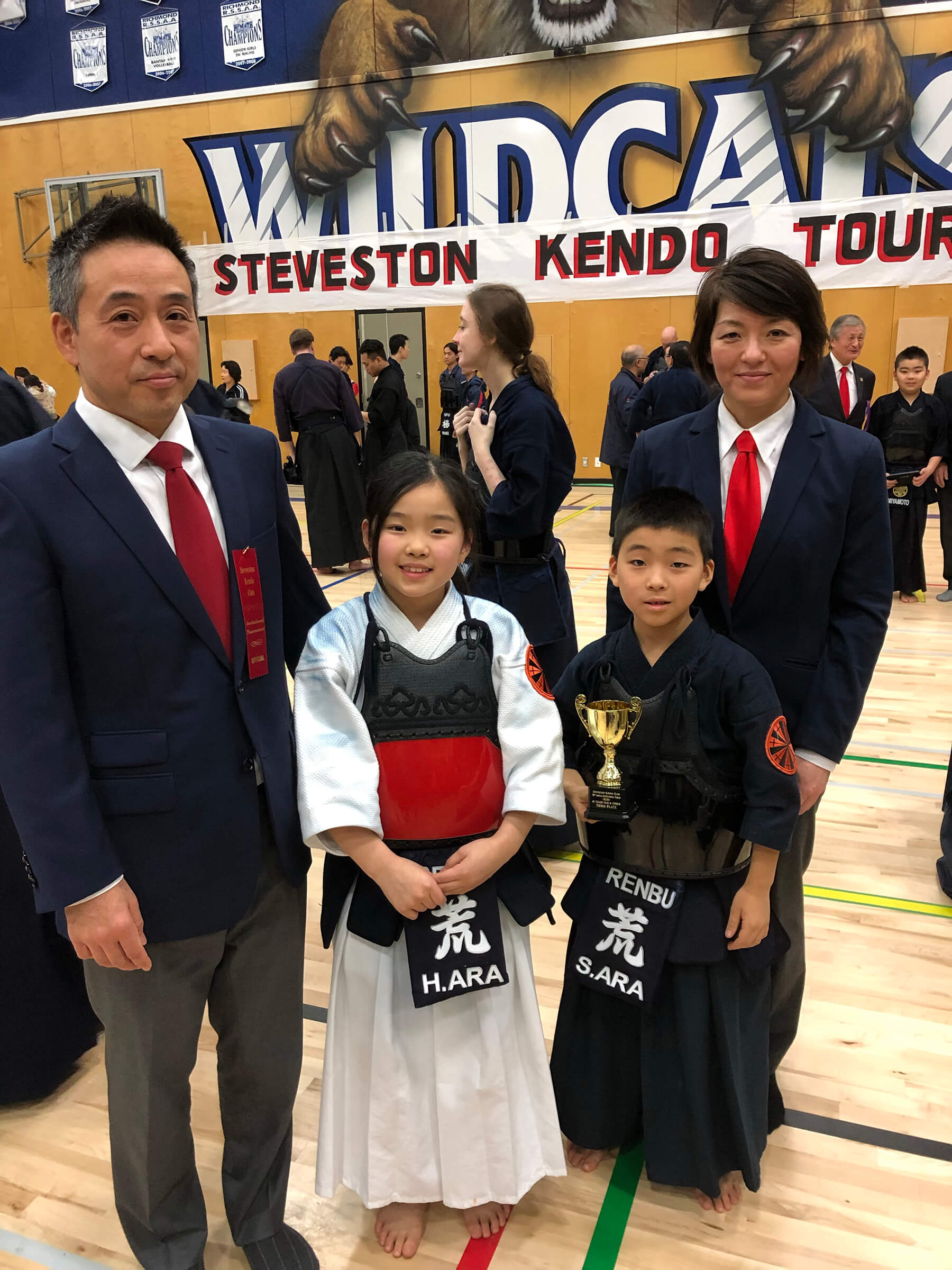
Ara Family at the Steveston Kendo Tournament.
